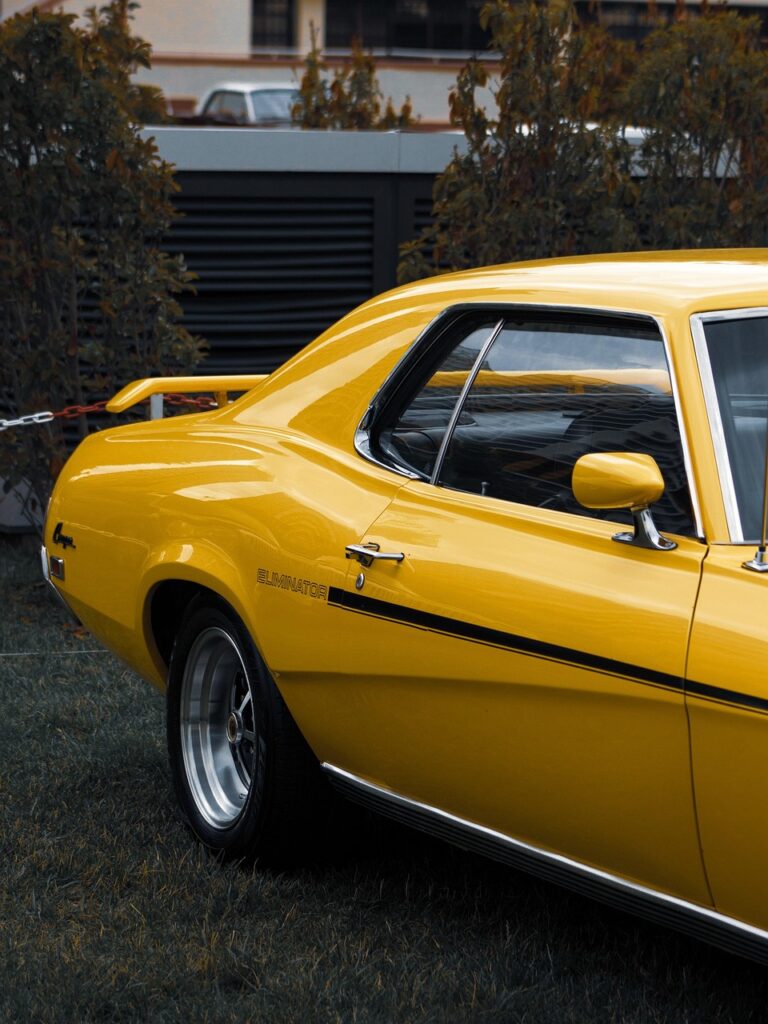
Hollywood has long held a deep fascination with vehicular destruction. From slapstick silent-era chases to modern blockbusters, spectacular car crashes are cinematic mainstays. These choreographed sequences, blending practical effects with CGI, thrill audiences with screeching tires and bending metal. Yet, beneath the chaos lies an astonishing financial reality.
While CGI simulates much damage, filmmakers often use real vehicles or convincing replicas for authentic impact. This commitment frequently leads to destroying incredibly expensive, rare, and irreplaceable automobiles. For car enthusiasts, these wrecks are often poignant, even tragic events. As one source warns, “Sensitive gearheads should proceed with caution.”
We’re embarking on an exhilarating, though sometimes heartbreaking, journey through cinema’s most memorable and financially significant car destructions. We’ll delve into the astonishing real-world values and dramatic stories behind their on-screen demises. Prepare to be astounded by Hollywood’s audacity as we unveil the first half of the most expensive cars ever sacrificed for our entertainment.
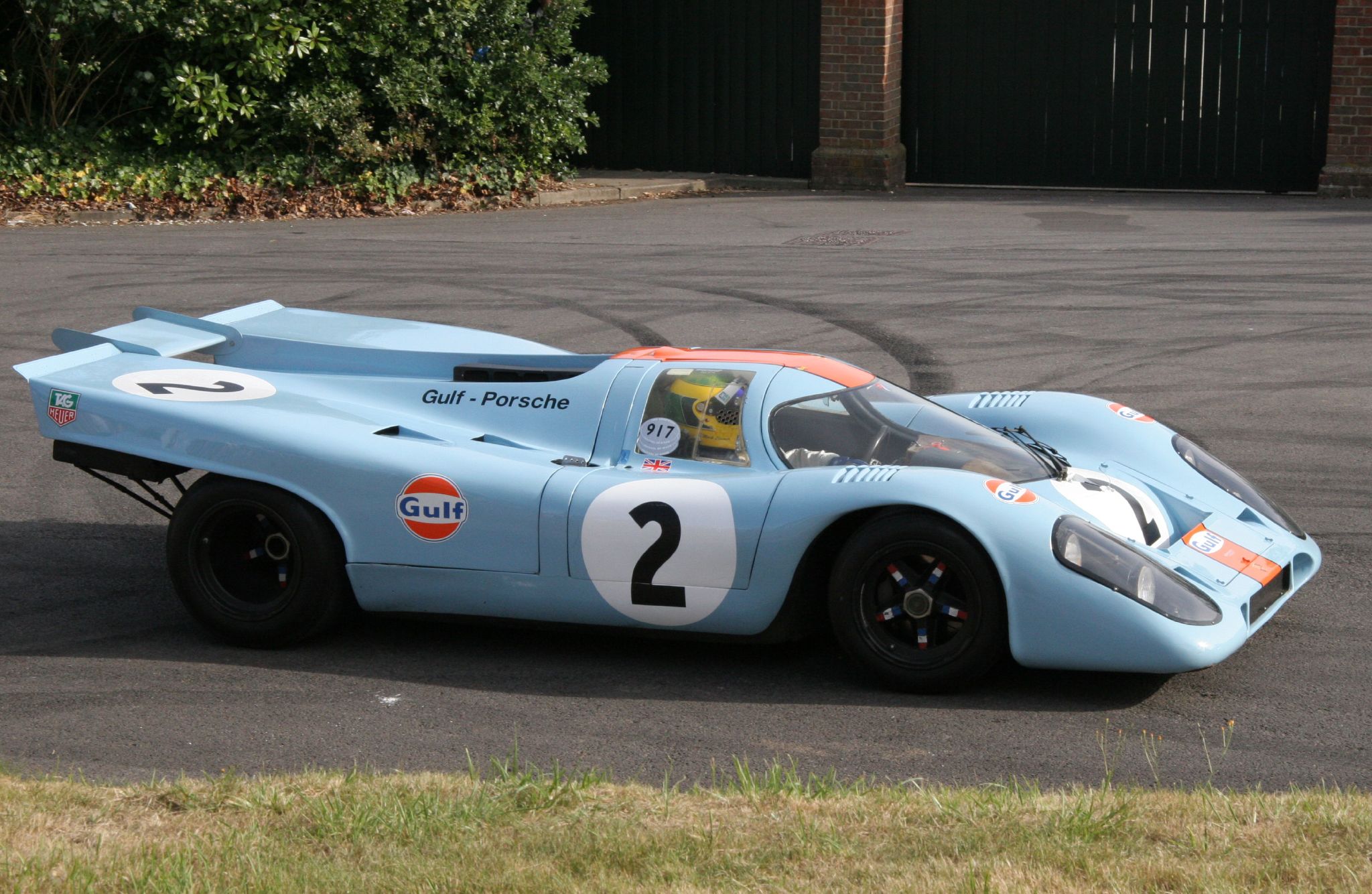
1. **Porsche 917K from Le Mans**
The 1971 racing epic “Le Mans,” starring Steve McQueen, showcased an automotive legend: the Porsche 917K. This 1970 racing thoroughbred remains the most expensive Porsche ever sold, fetching $14.08 million in 2017. With its 630 horsepower flat-12 engine and illustrious racing pedigree, the 917K is a revered model, making its on-screen incident profoundly impactful.
Tragically, this severe wreck was entirely unscripted. Chassis 013, one of three 917Ks used, crashed during production. British driver David Piper narrowly escaped with his life but suffered severe injury. While navigating the Maison Blanche circuit, a tire blowout sent the powerful car careening off barriers. The devastating impact split the 917K in two, and Piper tragically lost the lower section of his right leg.
Despite the horrific personal toll, Piper’s passion for motorsports endured; he returned as a team owner and driver. The wrecked car’s fate is debated. The National Motor Museum Trust claims chassis 013 was rebuilt and continued racing. Other accounts suggest chassis 034 was renumbered as 013, implying the original was scrapped. This unscripted demolition stands as film history’s most expensive accidental wreck, a testament to racing and filmmaking risks.
Read more about: Beyond the Garage: The 12 Most Impressive Celebrity Car Collections Ranked and Revealed
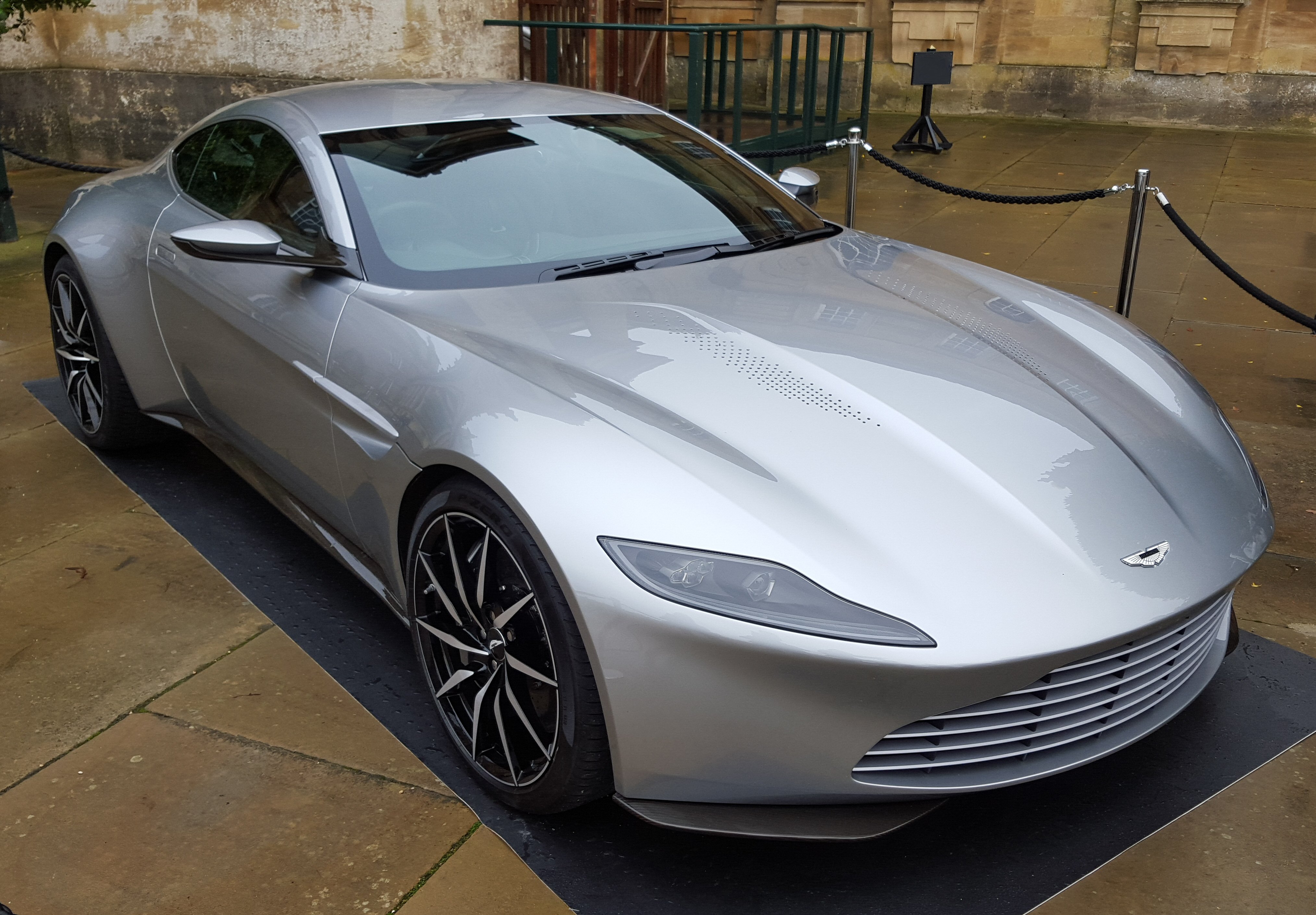
2. **Aston Martin DB10 in Spectre**
James Bond films are synonymous with sophisticated, expensive automobiles, and 2015’s “Spectre” delivered spectacularly with the Aston Martin DB10. This vehicle was built exclusively for the movie; only 10 units were manufactured, making it exceptionally rare. A staggering seven were deliberately destroyed during filming, significantly contributing to the movie’s high-octane vehicular carnage.
In 2016, one of three surviving DB10 models commanded $3.6 million at auction. This price estimates the combined potential value of the seven wrecked at well over $25 million. Guinness World Records estimated each DB10 prototype at $4.6 million, suggesting Bond shredded an eye-watering $32.2 million worth of luxury vehicles. Total vehicle destruction for “Spectre” reached $48 million, including Jaguar C-X75s and customized Land Rover Defenders.
The scale of this destruction is staggering, especially compared to “Dr. No’s” $1 million budget. The spy’s taste for chaos has clearly evolved. The Rome chase scene alone caused substantial damage; stunt coordinator Gary Powell recalled, “In Rome, we wrecked millions of pounds’ worth. They were going into the Vatican at top speeds of 110 mph.” Yet, with a $245 million budget yielding over $880 million worldwide, the spectacular destruction was ultimately a profitable investment.
Car Model Information: 2025 Genesis GV80 3.5T
Name: Aston Martin DB10
Manufacturer: Aston Martin
Production: 2014–2015,10 produced
Assembly: Gaydon,Warwickshire
Class: Grand Tourer
BodyStyle: coupé
Layout: Front mid-engine, rear-wheel-drive layout
Platform: Aston Martin VH platform
Engine: Jaguar AJ-V8 engine#Aston Martin 4.3/4.7,V8 engine
Transmission: Graziano Trasmissioni,manual transmission
Wheelbase: cvt
Width: cvt
Weight: 1542 kg
Abbr: on
Doors: Swan doors
Successor: Aston Martin DB11
Predecessor: Aston Martin DB9
Related: Aston Martin Vantage (2005),Aston Martin Vantage (2018)
Designer: Marek Reichman
Sp: uk
Categories: All Wikipedia articles written in British English, Articles with short description, Aston Martin concept vehicles, Cars designed and produced for films, Cars introduced in 2014
Summary: The Aston Martin DB10 is a bespoke grand tourer specially developed for the James Bond film Spectre by the British luxury car manufacturer Aston Martin.
Get more information about: Aston Martin DB10
Buying a high-performing used car >>>
Brand: Aston Martin Model: DB10
Price: $63,683 Mileage: 5,413 mi.
Read more about: Aston Martin’s Most Iconic & Beautiful Cars: Design Masterpieces Through History

3. **Lamborghini Countach in The Wolf of Wall Street**
Martin Scorsese’s “The Wolf of Wall Street” famously portrayed Jordan Belfort’s excesses, with his pristine Lamborghini Countach central to a chaotic scene. A Quaalude-intoxicated Belfort (Leonardo DiCaprio) attempts to drive home, his language devolving into slurred gibberish. A voice warns, “Don’t get behind the wheel,” a command Belfort defiantly ignores.
Delirious, Belfort crawls “snake-like” to his porch, where the elegant Countach awaits him “like a royal carriage.” He clambers in and makes it home, convinced the car is unscathed. This delusion shatters next morning when police reveal his wrecked Countach. The audience then sees the full, unvarnished sequence of events.
A montage of mayhem ensues: screeching tires lead to a reverse into a parked car, a plow into a golf buggy, and a thud into another vehicle. Belfort drives maniacally into street signs, cursing other motorists. Scorsese used a genuine Lamborghini Countach; two were employed. The non-wrecked survivor sold for $1.655 million. Its wrecked counterpart went unsold at auction for $1.35 million. Despite its auction fate, the destroyed Countach remains a potent cinematic symbol of unchecked opulence.
Read more about: Queen Bey’s Coveted Collection: An Exclusive Deep Dive into Beyoncé’s 15 Most Glamorous and Powerful Rides
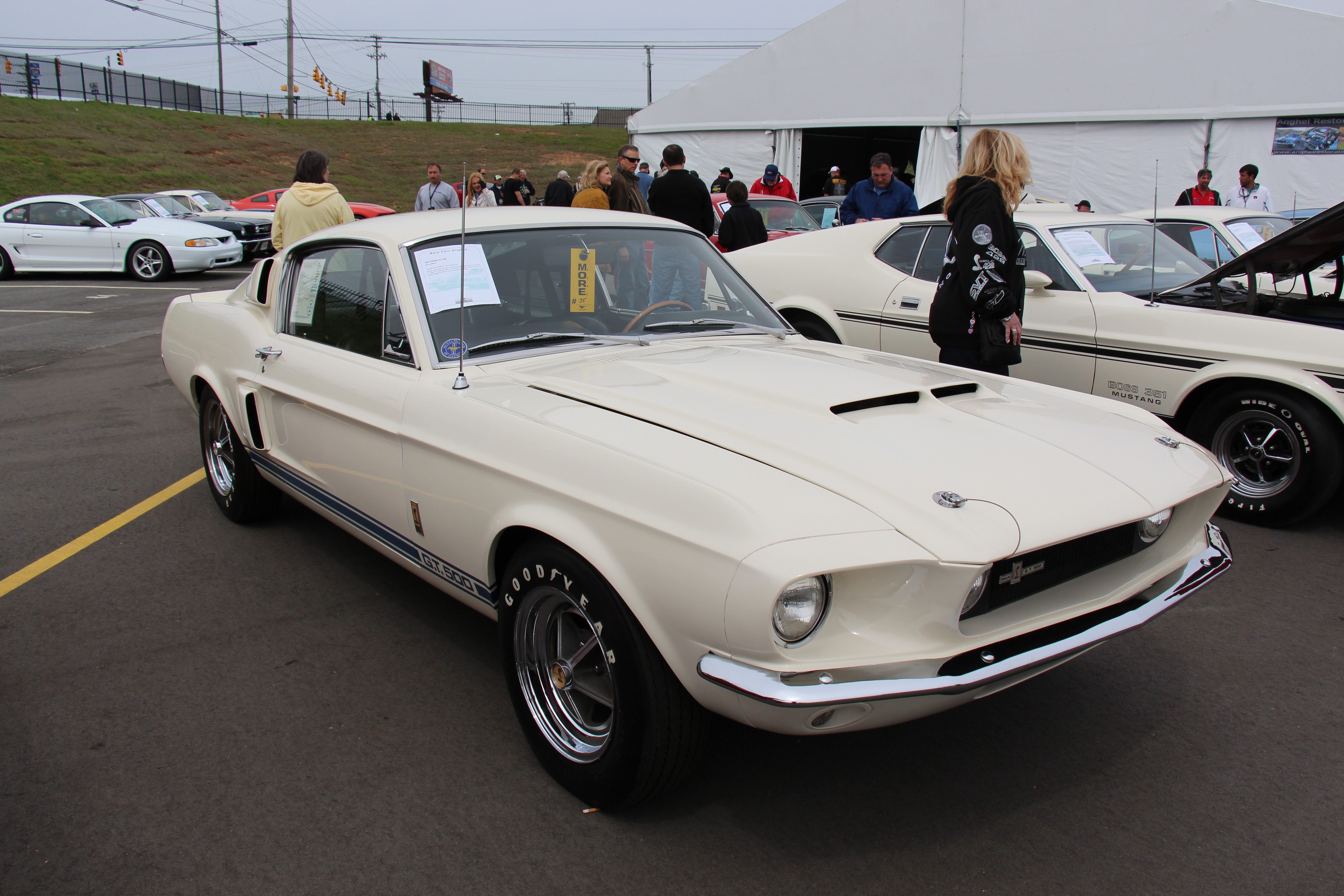
4. **1967 Shelby Mustang GT500 (Gone in 60 Seconds)**
The 2000 remake of “Gone in 60 Seconds” introduced an instant icon: the modified 1967 Ford Mustang fastback, “Eleanor.” Expertly customized to mimic a Shelby GT500, its on-screen allure cemented its legend. Eleven replicas were created; only three were fully functional. In Hollywood’s pursuit of action, two operational vehicles were tragically wrecked, leaving just one survivor.
The film’s heart-stopping climax, a daring jump scene on Los Angeles’ Vincent Thomas Bridge, claimed two functional Mustangs. This intense sequence involved a high-speed pursuit of Memphis Raines (Nicolas Cage) and multiple takes. With a strict deadline to deliver the car, Raines found his path blocked by an accident. Conveniently, a ramp on a car carrier offered an audacious solution.
What ensued was pure spectacle: Raines reversed, revved, and executed a jump rivaling any classic movie stunt. The primary jump Mustangs were obliterated, though another was partially saved by landing on boxes. The “hero car,” for close-ups, was the sole functional survivor. This “Eleanor” sold for $1.1 million at auction in 2013, setting a benchmark for its wrecked brethren. The destruction of its counterparts amplified the surviving Eleanor’s rarity and collector’s value.
Read more about: From Blockbusters to Auction Blocks: The Most Valuable Cars to Ever Grace Our Screens
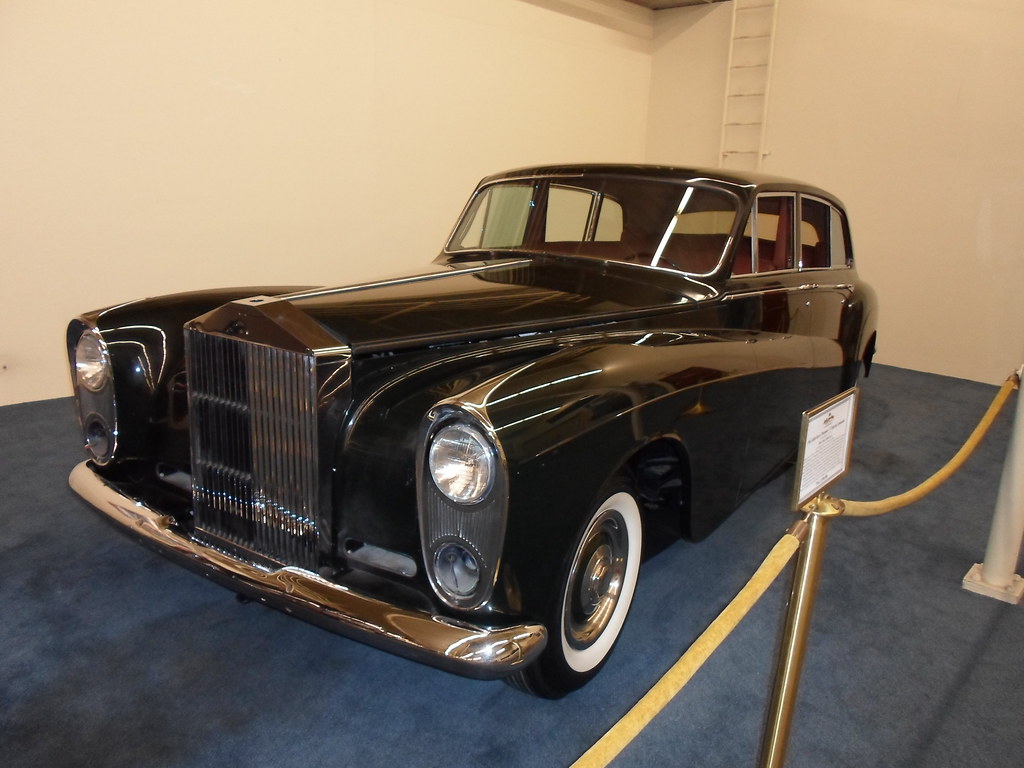
5. **Rolls-Royce Phantom in Iron Man 2**
The Monaco Grand Prix in “Iron Man 2” served as an explosive backdrop for a Rolls-Royce Phantom’s unfortunate encounter with Ivan Vanko, aka Whiplash (Mickey Rourke). Chaos erupts after Tony Stark (Robert Downey Jr.) drives his Formula 1 car. Whiplash, with electrified whips, carves through speeding vehicles, slicing the hood of Stark’s 1978 Wolf WR Ford replica.
As Whiplash menaces Stark, Happy Hogan (Jon Favreau), Tony’s loyal driver, frantically intervenes. In a desperate bid to deliver the Iron Man suit, Hogan drives a classic Rolls-Royce Phantom against traffic. He believes he’s saved the day by ramming Whiplash, pinning him against the barricades.
However, Whiplash’s strength is underestimated. As Stark attempts to enter, Whiplash slices the door in half. Hogan responds to “Hit him again!” by repeatedly reversing and ramming the villain. Iron Man ultimately arrives, kicking the severed Rolls Royce out of harm’s way. For billionaire Tony Stark, the estimated $876,000 to $986,000 combined cost for the two destroyed Phantoms was likely a minor expense.
Read more about: Fueling Your Wallet’s Misery: These 14 Rides Have Terrible MPG, and Owners Despise the Pump Life

6. **Ferrari 250 GT California replica in Ferris Bueller’s Day Off**
“Ferris Bueller’s Day Off” features an iconic destruction: the magnificent Ferrari 250 GT California. Shrewd filmmaking chose replicas over sacrificing an actual $11 million Ferrari. Three Modena Spyder California replicas were commissioned. A genuine 250 GT was sparingly used for close-ups; one replica handled general driving.
The third replica met its dramatic, unforeseen demise in a memorable scene. Ferris Bueller (Matthew Broderick), Sloane Peterson (Mia Sara), and Cameron Frye (Alan Ruck) futilely try to reverse the odometer by running the car on jack stands. This leads to Cameron’s poignant outburst, expressing his struggle to gain his father’s affection over the car. His emotions overwhelm him, resulting in a violent tantrum.
In rage, Frye brutally kicks the car, damaging the bumper, grille, and hood. His assault inadvertently dislodges the jacks. Cameron, calm, leans on the hood, accidentally pushing the car off its support. The trio watches in horror as the Ferrari reverses uncontrollably, crashing through the window, plunging into the ravine below. The wrecked replica was never sold, though an unused model fetched over $400,000 at auction. Its cinematic fame and association with the genuine article cement its place among expensive wrecked cars.
Car Model Information: 2025 Genesis GV80 3.5T
Name: Ferrari 250 GT , California Spyder
Caption: Ferrari 250 GT California Spyder SWB at the Goodwood Revival 2009.
Manufacturer: Ferrari
Production: 1957–1963,(106 produced)
Assembly: Modena
Designer: Sergio Scaglietti
Class: Sports car
BodyStyle: Roadster (automobile)
Layout: Longitudinal engine,Front-engine, rear-wheel-drive layout#Front mid-engine, rear-wheel-drive layout
Engine: Ferrari Colombo engine
Related: Ferrari 250 GT Berlinetta
Transmission: Manual transmission
Wheelbase: 2600 mm
Abbr: on (dry)
Weight: 1100 kg
Successor: Ferrari Daytona
Categories: 1950s cars, 1960s cars, Articles with short description, CS1 maint: others, Cars introduced in 1957
Summary: The Ferrari 250 GT California Spyder is a sports car developed by the Italian automotive company Ferrari. It is presented by the brand as Ferrari 250 Gran Turismo Spyder California or simply Ferrari 250 California. It was designed by Sergio Scaglietti, who adapted the styling of the 250 GT Pininfarina, and was produced by Carrozzeria Scaglietti. The model gained considerable recognition following its appearance in the 1986 film Ferris Bueller’s Day Off.
The 250 GT California Spyder is a convertible version of the contemporary Berlinetta. It is powered by the traditional Ferrari V12 engine and was produced in approximately 100 units, nearly equally split between long wheel-bases (LWB) versions from 1957 to 1960 and short wheelbase (SWB) versions from 1960 to 1963.
At auction French actor Alain Delon sold for nearly EUR 16.3 million in February 2015 Christies sold a rare variant for USD 25 million at 2025 Monterey Car Week.
Get more information about: Ferrari 250 GT California Spyder
Buying a high-performing used car >>>
Brand: Ferrari Model: 250 GT California
Price: $63,683 Mileage: 5,413 mi.
Read more about: Rev Your Engines! The Reality Check on 13 Beloved Movie Cars That Just Can’t Exist as They Do On Screen

7. **Lamborghini Murcielago LP640 (The Dark Knight)**
While the Tumbler Batmobile is an indelible sci-fi icon, Bruce Wayne’s personal Lamborghini Murcielago LP640 endured an expensive, dramatic fate in “The Dark Knight.” This car-wrecking scene brilliantly highlights Wayne’s heroism outside his caped persona. Christian Bale’s Bruce Wayne deliberately swerves his sleek Lamborghini into an oncoming truck, thwarting an assassination attempt on a police car.
The daytime setting precluded the Batmobile’s use, offering Nolan a perfect opportunity to underscore Wayne’s commitment to saving lives. A clever detail: “Murciélago” is Spanish for “bat,” making this Lamborghini symbolic. It conveyed his billionaire status, while his willingness to destroy it to protect others perfectly encapsulated his true Batman character.
At filming, a Murcielago LP640 had a reported real-world value of approximately $350,000. While a considerable sum for most, this destruction was a negligible expense for Bruce Wayne. For a man with a cave brimming with high-tech gadgets and limitless fortune, one luxury car is a small price for justice and saving a life. This scene represents an expensive but noble sacrifice, a testament to Batman’s core values.
Car Model Information: 2010 Lamborghini Murcielago LP640
Name: Lamborghini Murciélago
Caption: Lamborghini Murciélago LP 640
Manufacturer: Lamborghini
Production: 2001–2010
ModelYears: 2002–2010
Assembly: Sant’Agata Bolognese
Designer: unbulleted list
Class: Sports car
BodyStyle: unbulleted list
Related: Lamborghini Reventón
Layout: Longitudinal engine,mid-engine design,all wheel drive
Engine: Lamborghini V12,V12 engine
Powerout: unbulleted list
Transmission: unbulleted list
Wheelbase: 2665 mm
Abbr: on
Length: unbulleted list
Width: unbulleted list
Height: 1135 mm
Weight: unbulleted list
Order: flip LP 670-4 SV
Predecessor: Lamborghini Diablo
Successor: Lamborghini Aventador
Doors: Scissor doors
Categories: 2010s cars, 24 Hours of Le Mans race cars, All articles with unsourced statements, Articles containing Spanish-language text, Articles with short description
Summary: The Lamborghini Murciélago is a sports car produced by Italian automotive manufacturer Lamborghini between 2001 and 2010. The successor to the Diablo and flagship V12 of the automaker’s lineup, the Murciélago was introduced as a coupé in 2001. The car was first available in North America for the 2002 model year. The Murciélago was Lamborghini’s first new design in eleven years, and was also the brand’s first new model under the ownership of German parent company Audi, which is owned by Volkswagen. The car is designed by Peruvian-born Belgian Luc Donckerwolke, Lamborghini’s head of design from 1998 to 2005.
A roadster variant was introduced in 2003, followed by the more powerful and updated LP 640 coupé and roadster and a limited edition LP 650–4 Roadster. The final variation to wear the Murciélago nameplate was the LP 670–4 SuperVeloce, powered by the largest and final evolution of the original Lamborghini V12 engine. Production of the Murciélago ended on 5 November 2010, with a total production run of 4,099 cars. Its successor, the Aventador, was unveiled at the 2011 Geneva Motor Show.
Get more information about: Lamborghini Murciélago
Buying a high-performing used car >>>
Brand: Lamborghini Model: Murcielago
Price: $516,950 Mileage: 18,817 mi.

8. **Lamborghini Huracán in Doctor Strange**
“Doctor Strange” presented a pivotal moment in the Marvel Cinematic Universe, not just for the introduction of magic but for devastating automotive destruction. Before Stephen Strange became the Sorcerer Supreme, he was a brilliant, albeit arrogant, neurosurgeon, living a life of opulent luxury. This aspirational lifestyle was perfectly encapsulated by his choice of vehicle: a sleek Lamborghini Huracán, a car synonymous with high performance and an eye-watering price tag that screams success.
The film’s opening sequence brilliantly utilized the car to highlight Strange’s self-assured nature and his tragic downfall. As he recklessly navigates a winding mountain road, engrossed in a phone call and images on his screen, the vibrant headlights of his Huracán cut through the rain-battered asphalt. He takes unnecessary risks, overtaking on blind corners and narrowly avoiding oncoming traffic, a potent visual metaphor for his pre-sorcerer heedlessness and boundless ego.
The psychedelic Pink Floyd soundtrack gives way to screeching tires and shattering glass as Strange clips another vehicle. His Lamborghini careens off the side of the mountain, tumbling uncontrollably. The scene is a masterclass in cinematic suspense, with the airbag inflating in slow motion and the car spinning like an out-of-control propeller before finally plunging into a river. This brutal, career-ending accident transforms Strange’s journey, forcing him to seek alternative paths to healing, far from the world of luxury sports cars.
Lamborghini itself provided a genuine Huracán for filming, and its destruction was entirely real. Marvel’s choice of this model wasn’t arbitrary; its high performance and luxury status perfectly mirrored Strange’s visionary and ambitious personality. While Lamborghini CEO Stefano Domenicali reportedly highlighted the surgeon’s survival as a testament to the car’s safety, director Scott Derrickson revealed that a staggering *nine* Lamborghinis were wrecked in total for the scene. At the time of filming, each Huracán had an approximate value of $238,600, bringing the total cost of their obliteration to around $2.15 million. This isn’t just movie magic; it’s a sobering reminder of the high cost of cinematic realism and, perhaps, the importance of keeping your eyes on the road.

9. **Lykan Hypersport (The Fast and Furious 7)**
The “Fast & Furious” franchise is practically a masterclass in vehicular mayhem, but “Fast & Furious 7” took it to a literally stratospheric level with the Lykan Hypersport. This isn’t just a supercar; it’s a hypercar, a rare gem manufactured by the Lebanese company W Motors, known for its extreme exclusivity and jaw-dropping price tag. Its appearance in the film immediately signaled that the stakes had never been higher, nor the budget for destruction larger.
Dominic Toretto, ever the daredevil, drives this magnificent machine in one of the franchise’s most iconic and utterly unbelievable stunts. Picture this: a pristine Lykan Hypersport, valued at an astonishing $3.4 million for its 2013-2017 models, soaring between the Etihad Towers in Abu Dhabi. This wasn’t a mere car chase; it was a gravity-defying, skyscraper-jumping spectacle that pushed the boundaries of what audiences thought possible in an action film.
The sheer audacity of the sequence is what makes it unforgettable. Toretto, with his usual blend of bravado and strategic thinking, bails out of the car before it crashes spectacularly out of the window. While the genuine limited-edition supercars had an estimated value of $3.4 million each, the film, ever pragmatic, utilized replicas for the actual stunts. Nevertheless, the visual impact was profound, reinforcing the film’s commitment to delivering unparalleled automotive destruction.
Only one stunt car survived this epic sequence to go to auction in May 2021, with early bidding starting around $100,000. The concept of destroying such an immensely valuable and rare vehicle, even if a replica, speaks volumes about the “Fast & Furious” brand. It’s about pushing limits, both cinematically and financially, to deliver those heart-stopping moments that keep fans coming back for more high-octane thrills. The Lykan Hypersport’s brief but glorious flight remains a pinnacle of the franchise’s destructive grandeur.
Car Model Information: 2025 Genesis GV80 3.5T
Name: Lykan HyperSport
Caption: The Lykan HyperSport in Monaco
Manufacturer: W Motors
Designer: Ralph Debbas
Production: 2013–2018
ModelYears: 2014–2018
Assembly: Jebel Ali,Dubai,United Arab Emirates
Class: Sports car
BodyStyle: coupé
Layout: Rear mid-engine, rear-wheel-drive layout
Engine: Porsche flat-six engine,twin-turbo
Transmission: Sequential manual transmission
Wheelbase: 2625 mm
Abbr: on
Length: 4480 mm
Width: 1944 mm
Height: 1170 mm
Weight: 1380 kg
Sp: uk
Successor: W Motors Fenyr SuperSport
Categories: All articles with unsourced statements, Articles with short description, Articles with unsourced statements from October 2024, Cars introduced in 2013, Cars powered by boxer engines
Summary: The Lykan HyperSport is a limited-production sports car manufactured by W Motors, a United Arab Emirates-based company, founded in 2012 in Lebanon with the collaboration of Lebanese and Italian engineers. It is the first sports car to be designed indigenously in the Middle East; however, the bodywork, chassis and engine were all produced in Germany and assembled in Italy.
The production of the car was limited to a total of seven units. The first pre-production Lykan HyperSport was unveiled to the public at the Qatar Motor Show in February 2013.
Get more information about: W Motors Lykan HyperSport
Buying a high-performing used car >>>
Brand: W Motors Model: Lykan Hypersport
Price: $63,683 Mileage: 5,413 mi.

10. **Aston Martin DB5 (Goldfinger)**
No discussion of iconic movie cars, especially those meeting an unfortunate end, would be complete without James Bond’s Aston Martin DB5. This vehicle isn’t just a car; it’s a legend, having become a definitive symbol of 007’s sophistication and his penchant for high-speed espionage. Its inclusion in the 1964 classic “Goldfinger” cemented its place in cinematic history, largely because Jaguar famously declined to provide a car for the film, paving the way for the Aston Martin to become a Bond staple.
The DB5, known for its elegant lines, advanced gadgets, and undeniable British charm, endured a rather rough outing in the film. During an intense chase scene, Bond, ever the resourceful driver, crashes his DB5 into a wall. While the extent of the on-screen damage was carefully managed for practical effects in the era, the implication was clear: even a car as magnificent as the DB5 could be sacrificed in the line of duty, or at least take a significant hit.
The real-world value of these cinematic treasures is astounding. One of the DB5s that emerged unscathed from “Goldfinger” sold for a mind-blowing $3.57 million in 2010. This gives us a stark benchmark for the hypothetical value of the cars that didn’t make it. The DB5’s enduring appeal and its pivotal role in establishing the Bond aesthetic make its on-screen collision a noteworthy entry in the annals of expensive cinematic car wrecks, even if its destruction was more implied than utterly obliterated.
The lasting legacy of the DB5 goes far beyond its cinematic crash. It set a precedent for Bond’s vehicular choices, ensuring that successive films would feature equally stunning, and often equally vulnerable, Aston Martin models. The DB5’s crash in “Goldfinger” underscored the dangerous world Bond inhabited, where even the most beautiful and technologically advanced machines could be disposable assets in the face of global threats.
Car Model Information: 2025 Genesis GV80 3.5T
Name: Aston Martin DB5
Manufacturer: Aston Martin
Production: 1963–1965 (1,059 units),2020 (25 units)
Assembly: Newport Pagnell,England
Designer: Carrozzeria Touring Superleggera
Class: Grand tourer
BodyStyle: coupé
Layout: Front-engine, rear-wheel-drive layout
Engine: DOHC,Straight-6,3995 cc
Order: flip
Abbr: on
Powerout: convert
Transmission: ZF Friedrichshafen
Length: 4570 mm
Width: 1680 mm
Wheelbase: 98.0 in
Predecessor: Aston Martin DB4
Successor: Aston Martin DB6
Doors: 2
Weight: 3311 lb
Sp: uk
Categories: All Wikipedia articles written in British English, Articles with short description, Aston Martin vehicles, CS1: unfit URL, Cars discontinued in 1965
Summary: The Aston Martin DB5 is a British grand tourer (GT) produced by Aston Martin and designed by Italian coachbuilder Carrozzeria Touring Superleggera. Originally produced from 1963 to 1965, the DB5 was an evolution of the final series of DB4. The “DB” designation is from the initials of David Brown who built up the company from 1947 onwards.
The DB5 is best-known for its role in the James Bond films. It was first driven by the fictional spy in the film Goldfinger (1964). In 2013, the car featured on a “British Auto Legends” postage stamp issued by the Royal Mail.
Get more information about: Aston Martin DB5
Buying a high-performing used car >>>
Brand: Aston Martin Model: DB5
Price: $63,683 Mileage: 5,413 mi.
Read more about: From Blockbusters to Auction Blocks: The Most Valuable Cars to Ever Grace Our Screens

11. **Lamborghini Miura P400 (The Italian Job)**
The 1969 British comedy “The Italian Job” delivered one of cinema’s most memorable car wrecks right in its opening sequence, featuring the stunning Lamborghini Miura P400. This car, which debuted in 1966, quickly became a favorite among car enthusiasts and filmmakers alike, thanks to its unique beauty and revolutionary design. Today, a 60s Miura P400 in excellent condition can fetch a cool $1 million, making its on-screen destruction all the more significant.
The film’s opening sequence is a masterclass in setting a tone of tragic beauty. Against the breathtaking backdrop of the Italian Alps, the elegant Miura P400 is seen cruising through tunnels and winding roads, a symphony of automotive perfection. However, this idyllic drive is brought to a shocking halt. The car is deliberately smashed by a bulldozer, before being unceremoniously dropped off a cliff, a chilling spectacle designed to make the wreck look like an accidental demise.
What makes this particular destruction fascinating, and perhaps a relief for sensitive gearheads, is the behind-the-scenes reality. While many sources initially claimed this car was valued at a staggering $1.5 million at the time – a truly monumental sum for 1969 – it was later revealed that the filmmakers employed a clever trick. They used an *already pre-crashed* car for the cliff plunge, meaning they didn’t think twice about sending it over the edge. The pristine driving shots were indeed of a genuine Miura, but its ultimate demise was spared.
Despite using a pre-damaged vehicle for the actual fall, the cinematic impact of the Miura’s destruction remains profound. It symbolizes the abrupt end of a luxurious life and sets a dark, thrilling tone for the caper that follows. This iconic scene is a testament to the ingenuity of filmmakers who understand the emotional weight a car can carry, even when they’re cleverly preserving a truly priceless original. The Miura became “the first real showstopper” for Lamborghini, and its tragic cinematic moment is forever etched in pop culture history.
Car Model Information: 2025 Genesis GV80 3.5T
Name: Lamborghini Miura
Caption: 1971 Lamborghini Miura P400 SV
Manufacturer: Lamborghini
Production: 1966–1973
Assembly: Sant’Agata Bolognese
Successor: Lamborghini Countach
Class: Sports car
BodyStyle: coupé
Layout: Transverse engine,rear mid-engine, rear-wheel-drive layout
Engine: cvt,Lamborghini V12,V12 engine
Transmission: Manual transmission
Wheelbase: 2500 mm
Abbr: on
Length: 4360 mm
Width: 1760 mm
Height: 1055 mm
Weight: 1292 kg
Designer: Marcello Gandini
Sp: us
Categories: 1970s cars, All Wikipedia articles written in British English, All articles needing additional references, All articles with unsourced statements, Articles needing additional references from February 2024
Summary: The Lamborghini Miura is a sports car produced by Italian automaker Lamborghini between 1966 and 1973. The car was the first high-performance production road car with a rear mid-engine, rear-wheel-drive layout, which has since become the standard for performance-oriented sports cars. When released, it was the fastest production car in the world.
The Miura was originally conceived by Lamborghini’s engineering team, which designed the car in its spare time against the wishes of company founder Ferruccio Lamborghini, who preferred powerful yet sedate grand touring cars over the race car-derived machines produced by local rival Ferrari. However, when the development mule was revealed to Ferruccio, he gave approval for its development to continue.
The Miura’s rolling chassis was presented at the 1965 Turin Auto Show, and the prototype P400 debuted at the 1966 Geneva Motor Show. It received stellar receptions from showgoers and the motoring press alike, each impressed by Marcello Gandini’s sleek styling and the car’s revolutionary mid-engine design.
Lamborghini’s flagship, the Miura received periodic updates and remained in production until 1973. A year later the Countach entered the company’s lineup, amid tumultuous financial times for the company.
Get more information about: Lamborghini Miura
Buying a high-performing used car >>>
Brand: Lamborghini Model: Miura P400
Price: $63,683 Mileage: 5,413 mi.
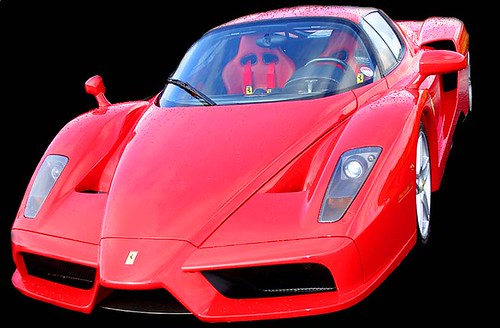
12. **Ferrari Enzo (Rush)**
Ron Howard’s “Rush,” a gripping 2013 film chronicling the intense rivalry between Formula 1 legends James Hunt and Niki Lauda, featured a dramatic crash that brought the raw danger of racing to the forefront. Central to one such devastating scene was a Ferrari Enzo, a car that embodies the pinnacle of Ferrari’s engineering prowess and exclusivity. Named after the company’s legendary founder, Enzo Ferrari, this rare gem is far more than just a car; it’s a collector’s dream, with only a few hundred ever made, each costing upwards of $2.5 million.
The film meticulously recreated the high-stakes world of 1970s Formula 1, where every race was a dance with death. While the movie primarily focuses on the F1 cars themselves, the inclusion of such an expensive and iconic Ferrari in a destructive sequence amplifies the sense of danger and loss inherent in the sport. The sight of a Ferrari Enzo crashing and burning on screen is a heart-stopping moment, not just for racing fans but for anyone who appreciates automotive artistry.
The context around the Enzo’s destruction in “Rush” is less about a single specific event involving a road car being obliterated, but rather about encapsulating the sheer financial and emotional cost of a high-speed racing incident involving a car of Ferrari’s caliber. The Enzo, named for the founder, represents the brand’s heritage and relentless pursuit of performance. Its on-screen demise serves as a powerful visual cue for the immense risks taken by those pushing the boundaries of speed.
While practicalities likely dictated the use of replicas or clever camera work to simulate the destruction of such an irreplaceable asset, the film masterfully conveys the tragedy. The “Rush” production understood that for dedicated fans, the idea of an Enzo being consumed by flames is as impactful as any direct, physical destruction of a priceless race car. It underscored that in the world of competitive racing, even machines of unparalleled beauty and value can be brutally sacrificed for speed, glory, or a single misjudgment.

13. **Koenigsegg CCXR (Fast & Furious 6)**
The “Fast & Furious” franchise has a knack for introducing audiences to some of the world’s most exotic and unattainable vehicles, only to spectacularly destroy them. “Fast & Furious 6” continued this tradition with the demise of a Koenigsegg CCXR during one of its signature high-octane races. This isn’t just any supercar; it’s a Swedish hypercar, a marvel of engineering known for its extreme exclusivity, breathtaking performance, and a price tag that easily soars above $4.8 million.
The Koenigsegg CCXR’s appearance in the film instantly elevates the stakes. These are cars designed for ultimate speed and luxury, representing the absolute pinnacle of automotive achievement. To see such a machine caught in the chaos of a “Fast & Furious” race, leading to its eventual destruction, is a potent visual that emphasizes the sheer scale of the action and the disregard for conventional automotive values in this cinematic universe.
While the specifics of its on-screen obliteration are woven into the larger fabric of a typical “Fast & Furious” set piece – explosions, crashes, and daring stunts – the mere presence and subsequent wrecking of a Koenigsegg CCXR make it stand out. It reinforces the franchise’s commitment to pushing boundaries and delivering over-the-top spectacle, where no vehicle, no matter how rare or expensive, is safe from the filmmakers’ destructive ambitions.
These hypercars, like the CCXR, are produced in incredibly limited numbers, often making their destruction, even simulated, a poignant event for automotive enthusiasts. The real-world value of a Koenigsegg CCXR at over $4.8 million underscores the astronomical sums involved in creating these cinematic sequences. It’s a testament to Hollywood’s audacity that such an incredibly valuable and unique piece of automotive art could be conceptualized as disposable for the sake of thrilling entertainment.

14. **Rolls-Royce Phantom (The Wolf of Wall Street)**
While “The Wolf of Wall Street” is famously remembered for Jordan Belfort’s debauched Lamborghini Countach scene, it also features another luxury vehicle meeting a less-than-dignified end: a Rolls-Royce Phantom. This iconic British marque, synonymous with unparalleled luxury, prestige, and power, serves as a backdrop to Belfort’s unchecked opulence. A Rolls-Royce Phantom typically costs around $450,000, making its on-screen damage a significant, albeit perhaps minor for Belfort, expense.
In a lesser-known but equally significant moment of vehicular destruction, the film captures the reckless disregard that characterized Belfort’s lifestyle. The context implies a scene where a Rolls-Royce Phantom is wrecked in a fit of rage or pure negligence, contrasting sharply with the vehicle’s inherent elegance and stately presence. It’s a symbolic destruction, showcasing how wealth, when combined with excess, can lead to the wanton disregard of even the most exquisite possessions.
This particular Phantom’s fate, separate from the Lamborghini’s drunken escapade, adds another layer to the film’s commentary on extreme wealth and its corrosive effects. The film, in its depiction of such high-value vehicles being casually destroyed, further underscores the detached reality of characters like Belfort, for whom a half-million-dollar car is merely a prop in their lavish, self-destructive dramas.
The spectacle of a Rolls-Royce Phantom being wrecked in a “fit of rage” is designed to shock and entertain. It caters to the audience’s fascination with extreme wealth and its consequences, demonstrating that for some, the cost of luxury vehicles is simply a line item in a much larger, and ultimately self-serving, budget for excess. It’s another example of how Hollywood uses expensive cars not just for action, but to powerfully symbolize character, status, and the eventual unraveling of a hedonistic empire.
As we conclude our journey through Hollywood’s most spectacular and costly vehicular destructions, it’s clear that the silver screen’s appetite for automotive carnage knows no bounds. From accidental wrecks of priceless race cars to intentional obliterations of hypercars for the sake of a single stunt, filmmakers consistently push the envelope, blending practical effects with ingenious storytelling. Each shattered chassis and exploded engine isn’t just a fleeting moment of chaos; it’s a carefully orchestrated spectacle, often carrying a multi-million-dollar price tag, designed to leave audiences breathless and reinforce the enduring allure of cinematic mayhem. These scenes serve as powerful reminders that in the realm of blockbusters, sometimes, the greatest art comes from the most expensive forms of destruction, leaving an indelible mark on both film history and the hearts of gearheads worldwide.



